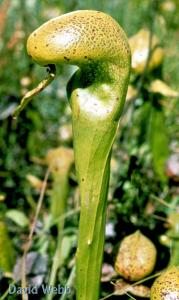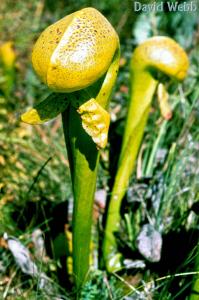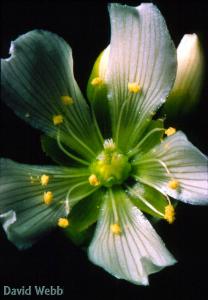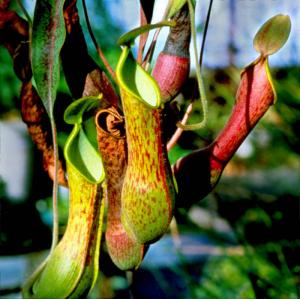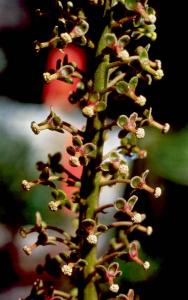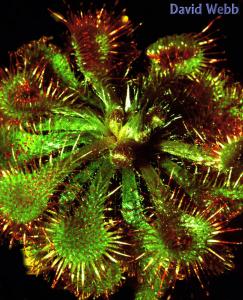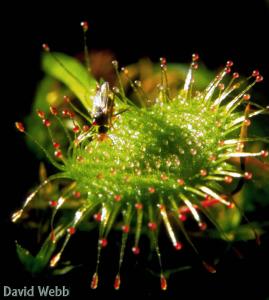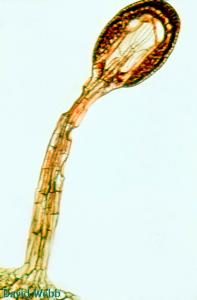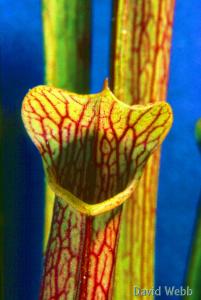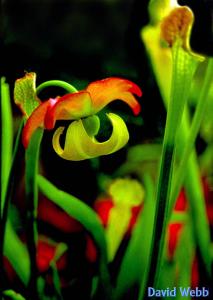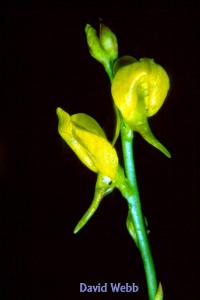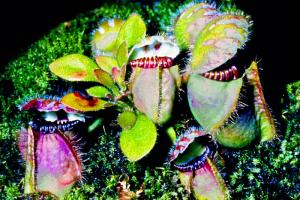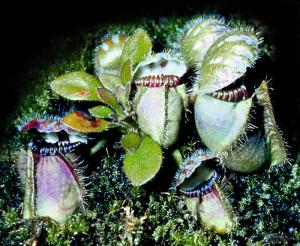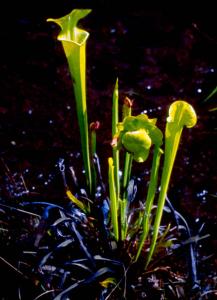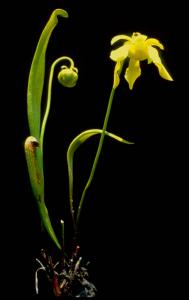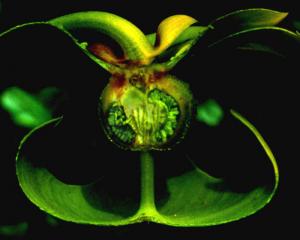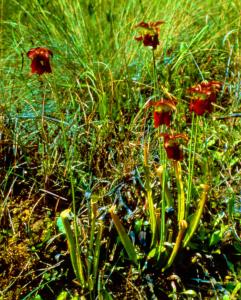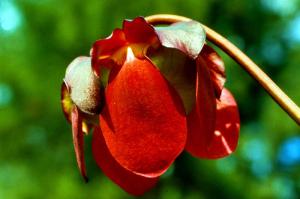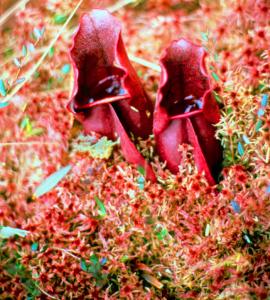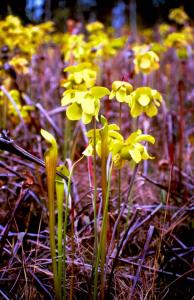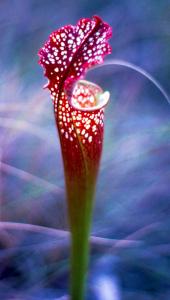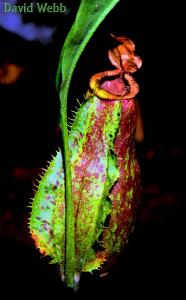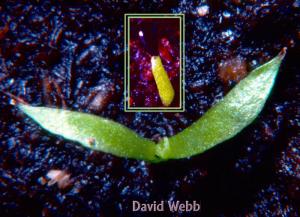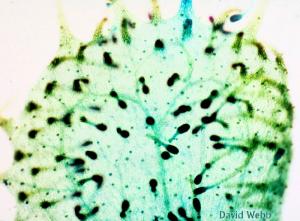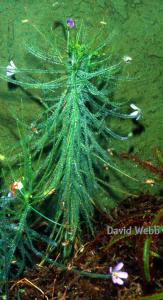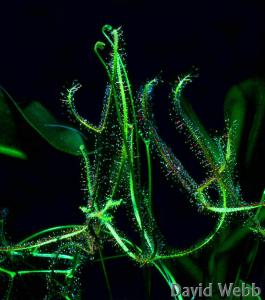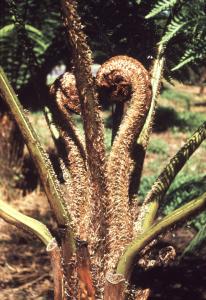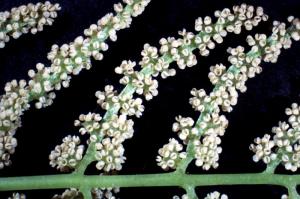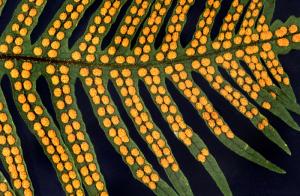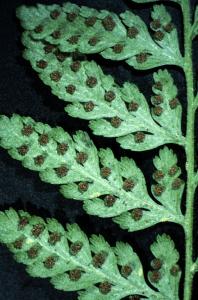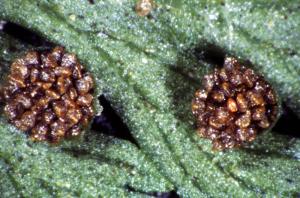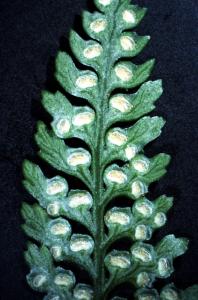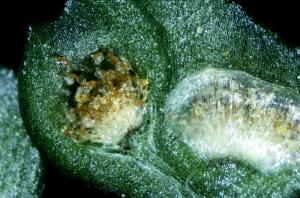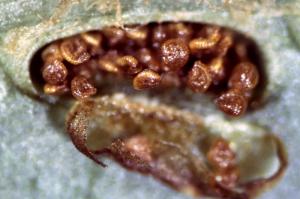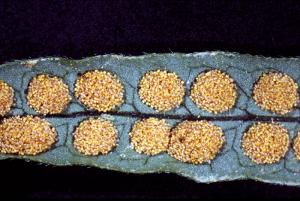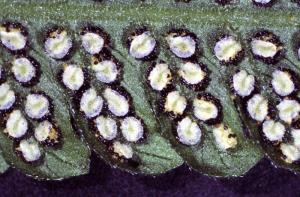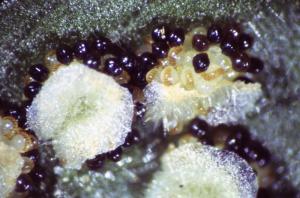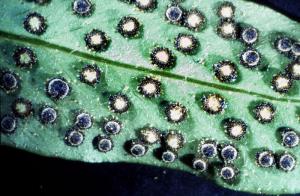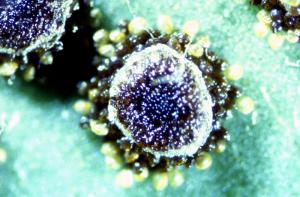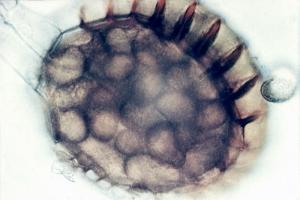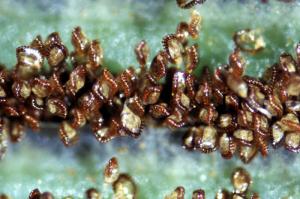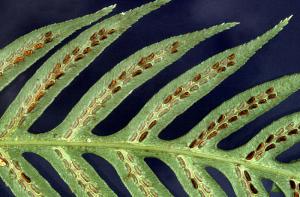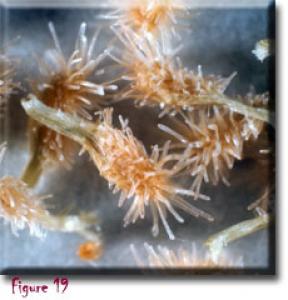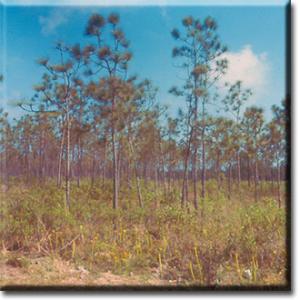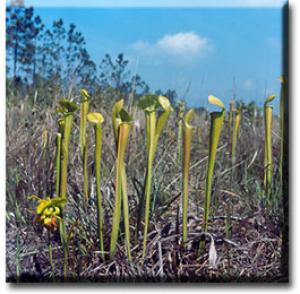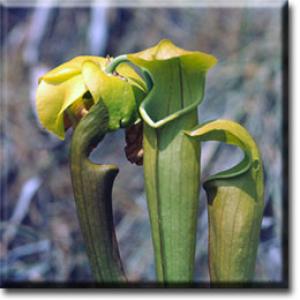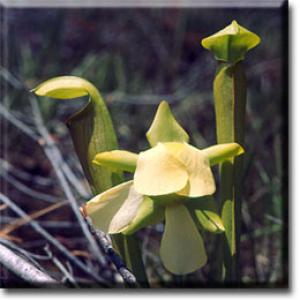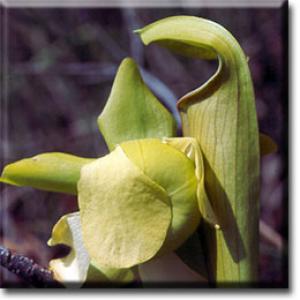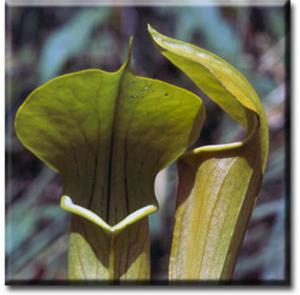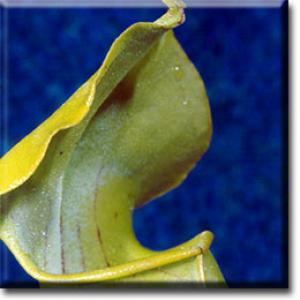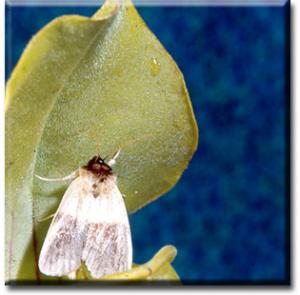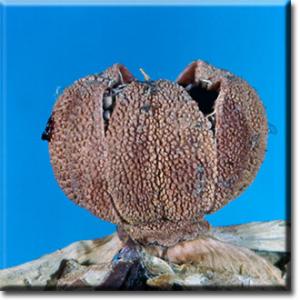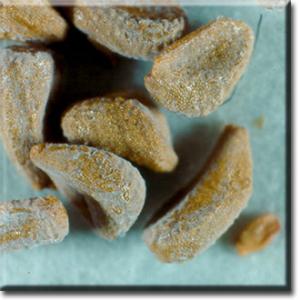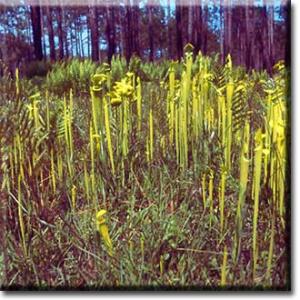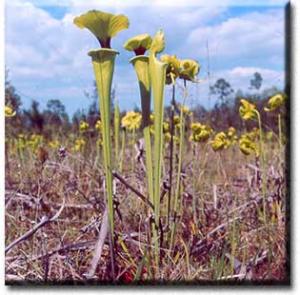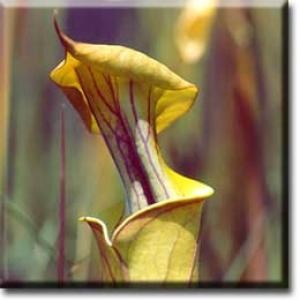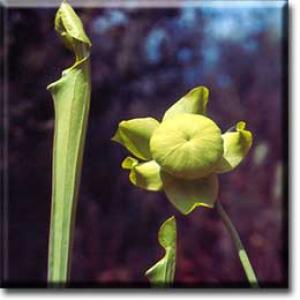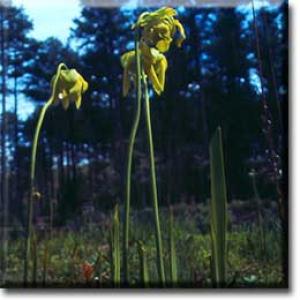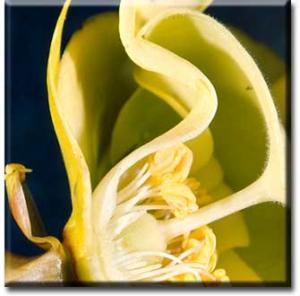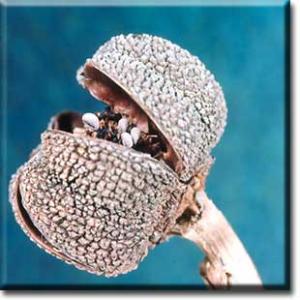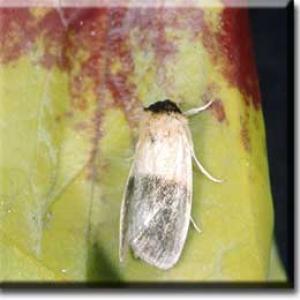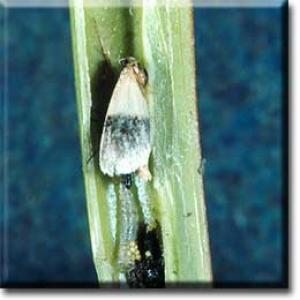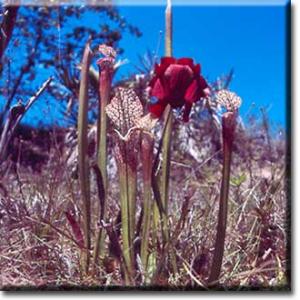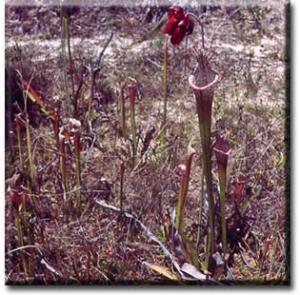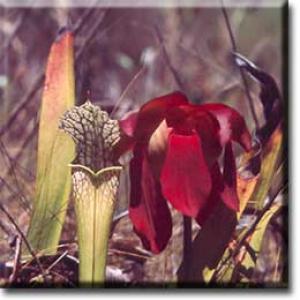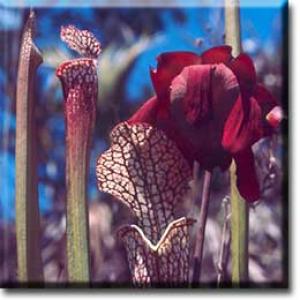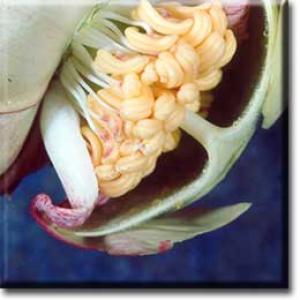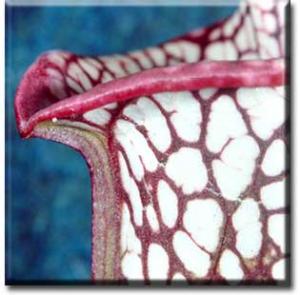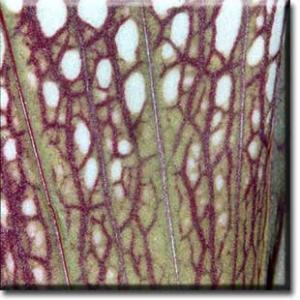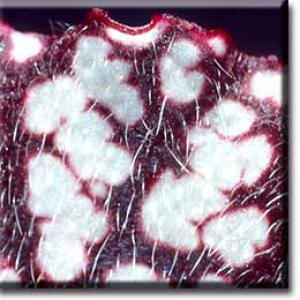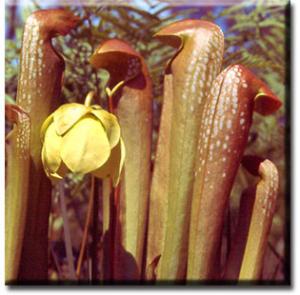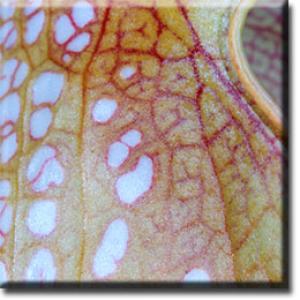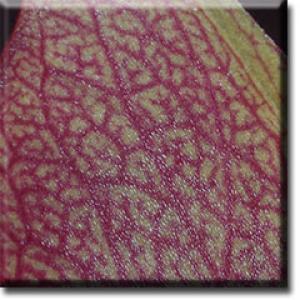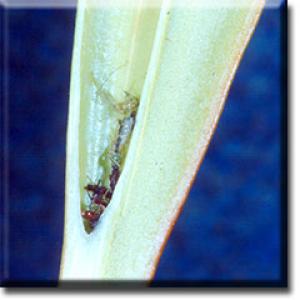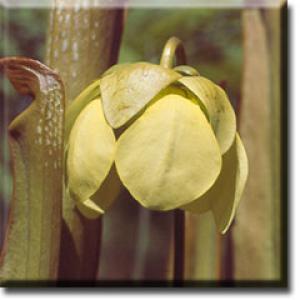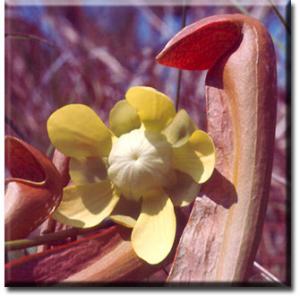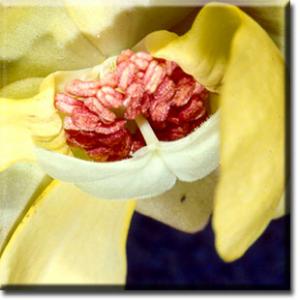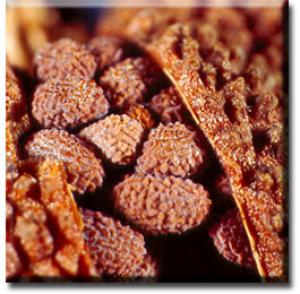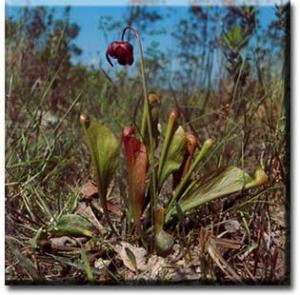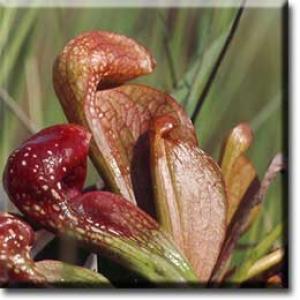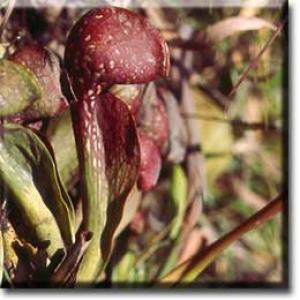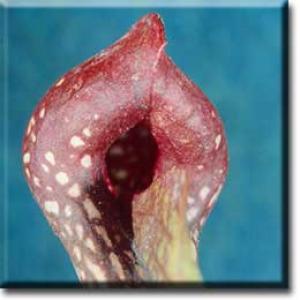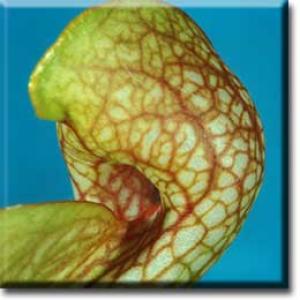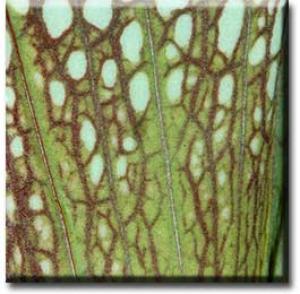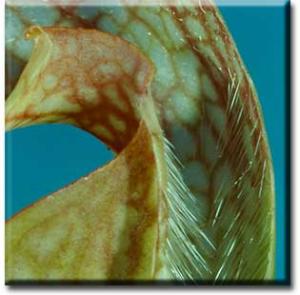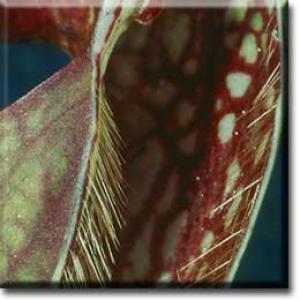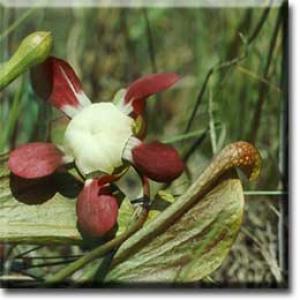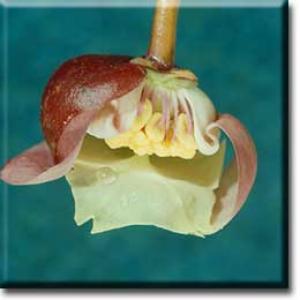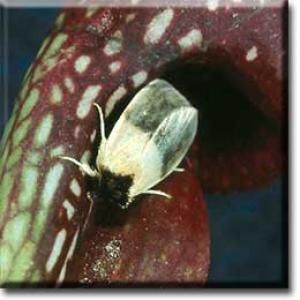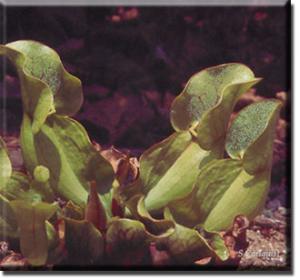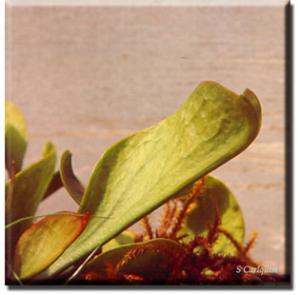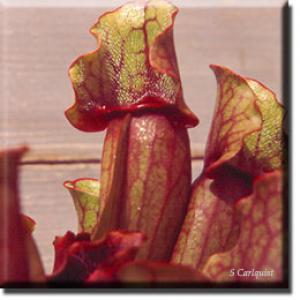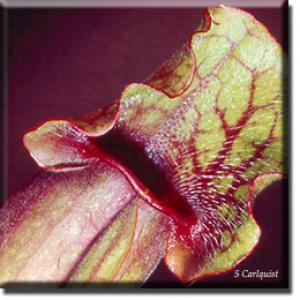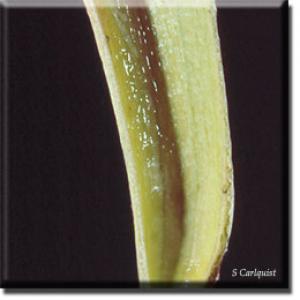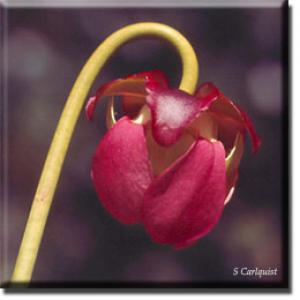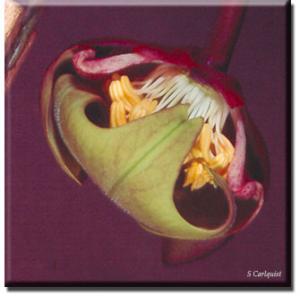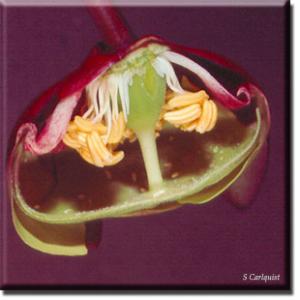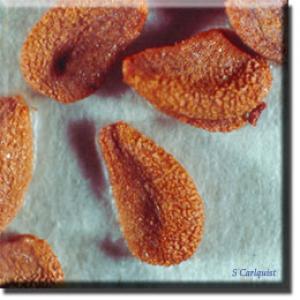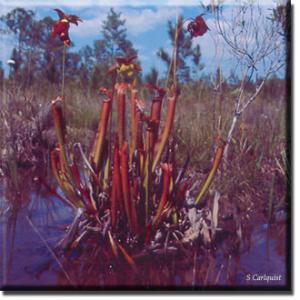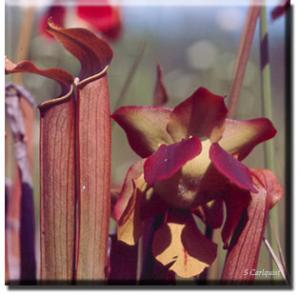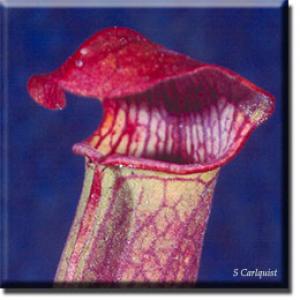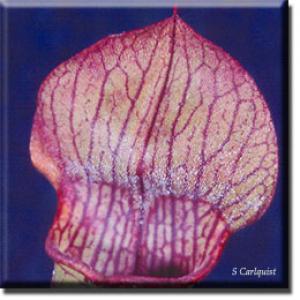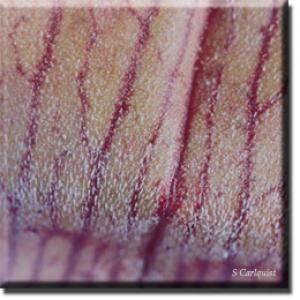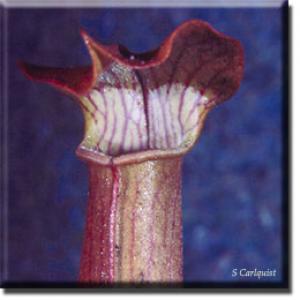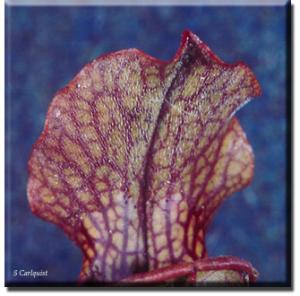08-003h

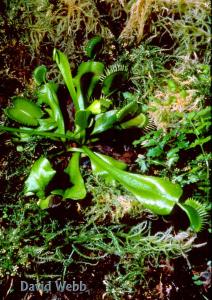
Dionaea muscipula, leaf w/insect
08-004h

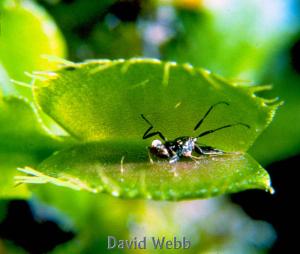
Dionaea muscipula, leaf closeup
08-005h

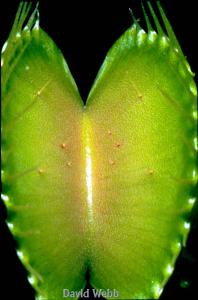
Dionaea muscipula, leaf closeup
08-006h

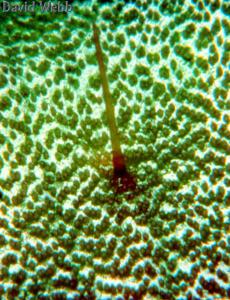
Dionaea muscipula, leaf macroscopic
08-007h

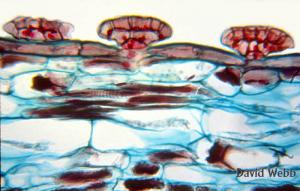
Dionaea muscipula, leaf x.s. w/Sarracenia
08-008h

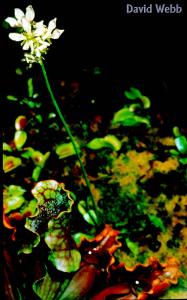
Dionaea muscipula, flowering
08-010h

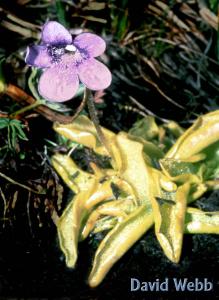
Pinguicula vulgaris, whole plant
08-010h1

![08-010h1]()
Pinguicula vulgaris, whole plant
08-011h

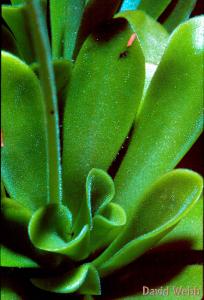
Pinguicula vulgaris, leaves
08-012h

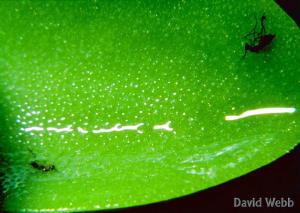
Pinguicula vulgaris, leaf w/insect
08-013h

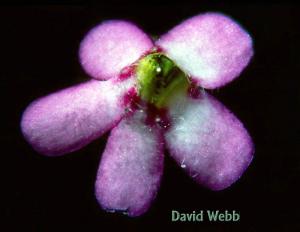
Pinguicula vulgaris, flower
08-015h

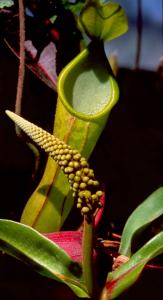
Nepenthes sp., leaf inflorescence
08-020h

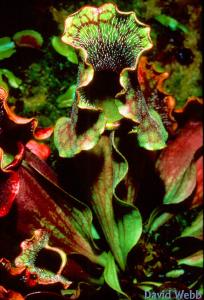
Sarracenia purpurea,whole plant
08-021h

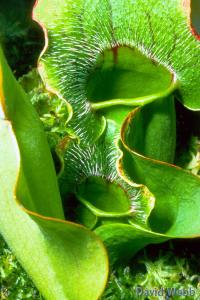
Sarracenia purpurea, leaves
08-022h

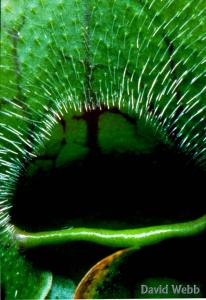
Sarracenia purpurea, leaf closeup
08-036h

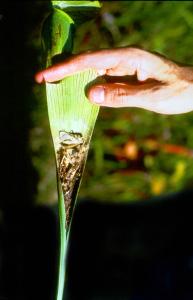
Sarracenia alata, trap contents
08-038h

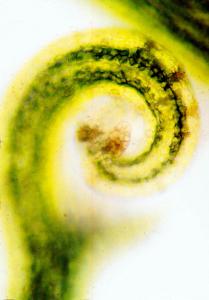
Utricularia bladder formation
08-039h


Utricularia bladder formation
08-040h

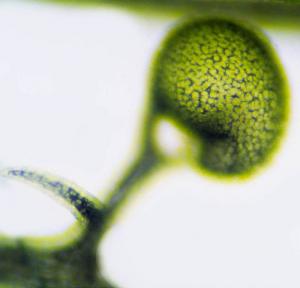
Utricularia bladder formation
08-041h

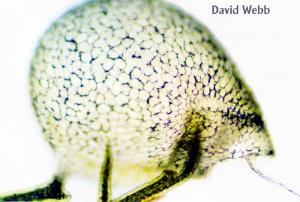
Utricularia bladder formation
08-042h

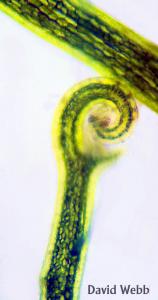
Utricularia bladder formation
08-043h

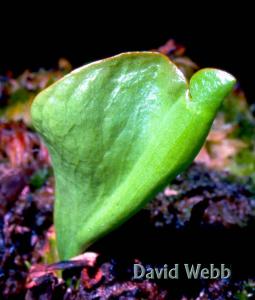
Sarracenia young pitcher plant leaf
08-044h

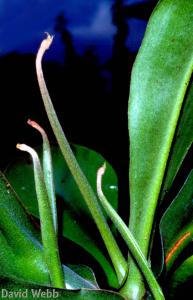
Young Nepenthes leaf. Traps form at extended midrib tips
08-047h

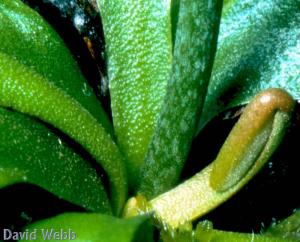
Young Venus' flytrap leaves
08-048h

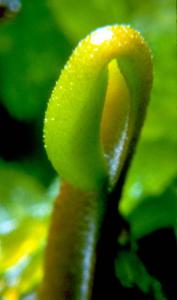
Young Venus' flytrap leaves
08-049h

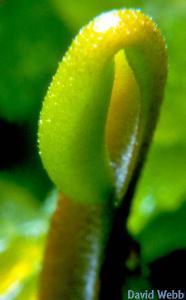
Young Venus' flytrap leaves
08-050h

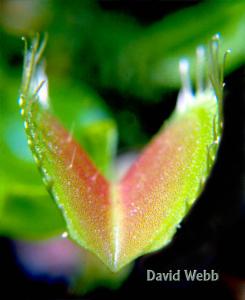
Young Venus' flytrap seedling with first trap leaves
08-051h

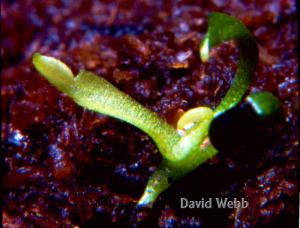
Young Venus' flytrap seedling with first trap leaves
08-052h

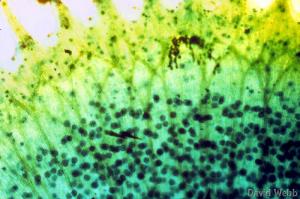
Cleared Venus' flytrap leaf
08-054h

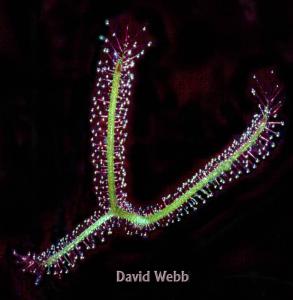
Drosophyllum leaves with prey-capturing glandular trichomes
08-055h

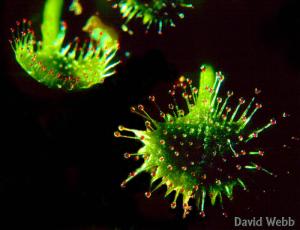
Drosera leaves with prey-capturing glandular trichomes
08-056h

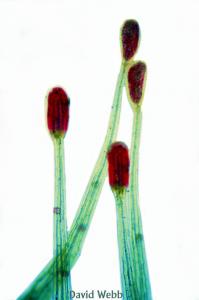
Drosera leaves with prey-capturing glandular trichomes
08-057h

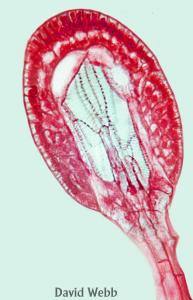
Drosera leaves with prey-capturing glandular trichomes
08-058h

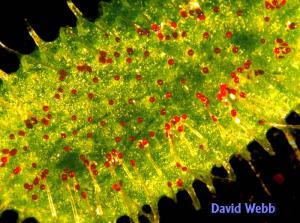
Drosera leaves with prey-capturing glandular trichomes
08-059h

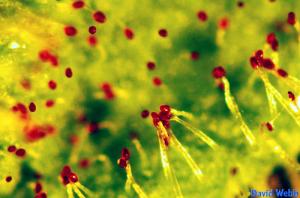
Drosera leaves with prey-capturing glandular trichomes
08-060h

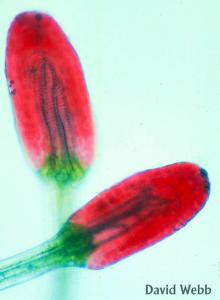
Drosera leaves with prey-capturing glandular trichomes
08-061h

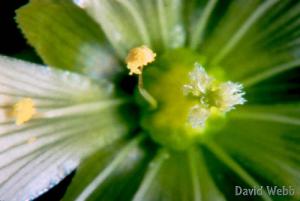
Venus' flytrap flower with stigma, anthers and ovary
08-064h

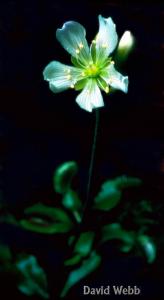
Venus' flytrap flower with leaf rosettes barely visible
08-065h

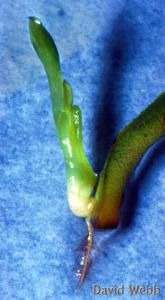
Vegetative propagation of Venus' flytrap from leaf bases
08-066h

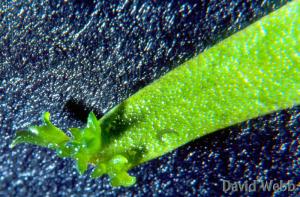
Vegetative propagation of Venus' flytrap from leaf bases
08-068h

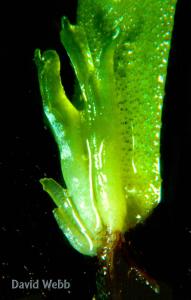
Vegetative propagation of Venus' flytrap from leaf bases
08-069h

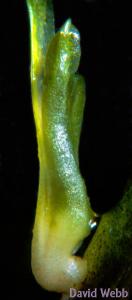
Vegetative propagation of Venus' flytrap from leaf bases
08-070h

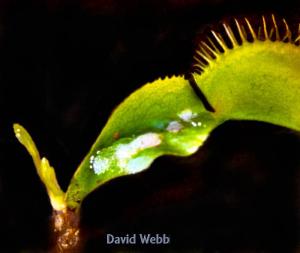
Vegetative propagation of Venus' flytrap from leaf bases
08-071h

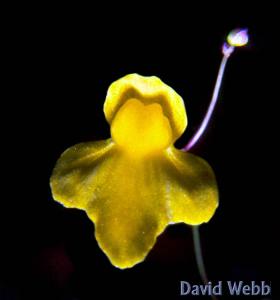
Utricularia flowers, face view
08-072h

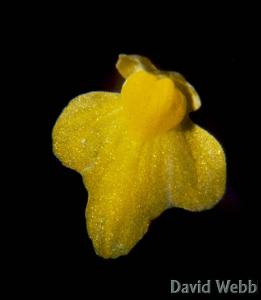
Utricularia flowers, face view
23-002

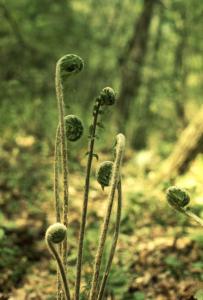
Osmunda cinnamomea croziers
23-003

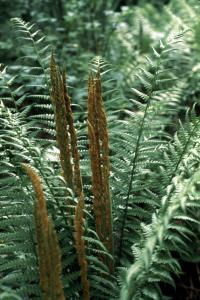
Osmunda cinnamomea fertile fronds
23-006

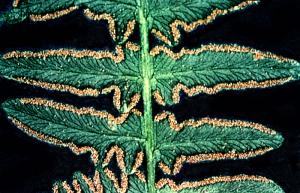
Fern sori (Pteridium sp.)
setSC-Byblis_gigantea-1

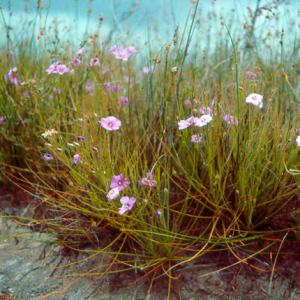
Byblis gigantea grows in southwestern Australia. It's a perennial plant that likes areas of acid sand that dry out in summertime. Often not a typical bog plant, it can be found in shrubby areas as well as open areas of white sand.
Return to the Byblis page or the Carnivorous Plant Index.
setSC-Byblis_gigantea-2

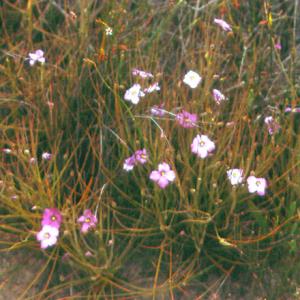
Byblis gigantea can grow in dense groupings. Its narrow leaves are covered on all surfaces by sticky hairs that trap insects. Thus, any insect passing through such a mass of leaves is likely to be trapped. sticky hairs do not change position once the insect is caught. The insect is gradually digested where it landed.
Return to the Byblis page or the Carnivorous Plant Index.
setSC-Byblis_gigantea-3

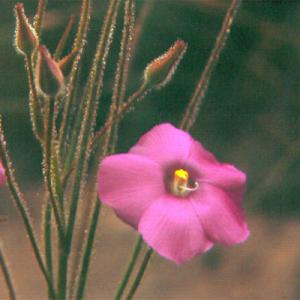
The leaves as well as the outer floral structures (sepals) of the flowers of Byblis gigantea are densely covered with sticky hairs. The flowers of Byblis are red-purple, and are probably attractive to a kind of bee.
Return to the Byblis page or the Carnivorous Plant Index.
setSC-Byblis_gigantea-4

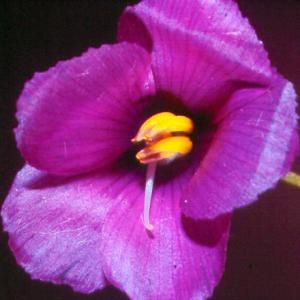
The flowers of Byblis gigantea look symmetrical at first glance. However, we see that the style (white) and the stamens (yellow) curve to use side of the flower. This curvature provides an approach pattern for a bee, orienting it so that it will get showered with pollen or deposit the pollen on the tip of the style.
Return to the Byblis page or the Carnivorous Plant Index.
setSC-Byblis_gigantea-5

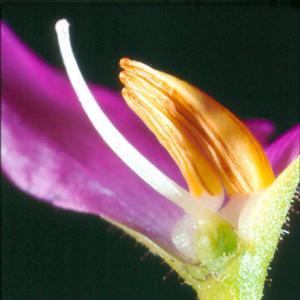
In a sectional view, we se the stamens and the style curving in different directions. The wide white stamen bases are curved and are responsible for the way that the stamens are arranged with relations to an incoming insect.
Return to the Byblis page or the Carnivorous Plant Index.
setSC-Byblis_gigantea-6

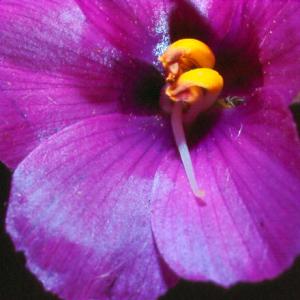
The stamens of Byblis gigantea don't open by slits. Rather, they have flaring holes at their tips. Byblis is one of a few flowering plants that have what is known as buzz pollination. In this process, the insects of an insect beat at frequencies that set the stamens in motion. As the stamens vibrate, the pollen grains shake out and dust the surfaces of the insect and catch on its hairs.
Return to the Byblis page or the Carnivorous Plant Index.
setSC-Byblis_linifolia-8

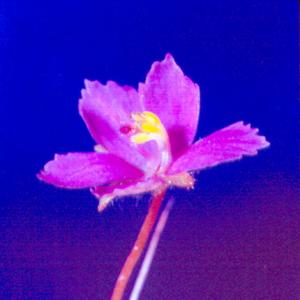
The flowers of Byblis linifolia are smaller than those of B. gigantean. The petals are fringed. Like B. gigantean, the stamens of Byblis linifolia have a curved shape and are adapted to buzz pollination.
Return to the Byblis page or the Carnivorous Plant Index.
setSC-Cephalotus-1

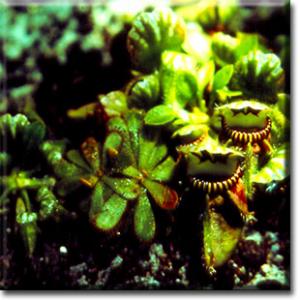
Cephalotus is known as the Albany Pitcher Plant. It grows only near the town of Albany, in southwestern Australia. It isn't related to other pitcher plants, although it has some features that resemble them. In this picture, you can see, at the center, the "ordinary" leaves, which are just flat, as well as some of the leaves which have the pitcher form and can catch insects.
setSC-Cephalotus-2

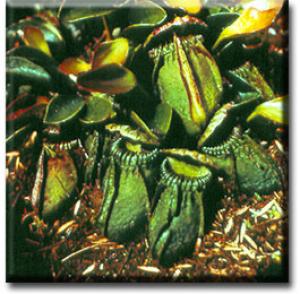
The pitchers of Cephalotus nestle close to each other and are usually found in moss at ground level. The Albany pitcher plant grows in scrubby areas that are moist all year around, on sandy soils that are acid--a habitat rather like that of many other carnivorous plants.
setSC-Cephalotus-3

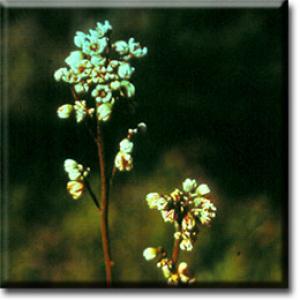
The Albany pitcher plant flowers in late summer, after most other plants in the region where it grows have flowered. The flowers of Cephalotus are rarely seen on cultivated plants--in part because it's a difficult plant to cultivate.
setSC-Cephalotus-4

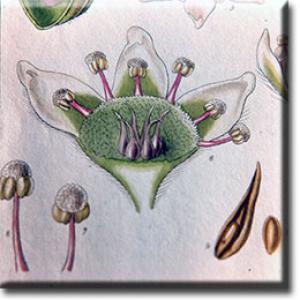
This old illustration from Curtis's Botanical Magazine shows that the flowers of Cephalotus have six sepals, six petals (rather hooded), six stamens. The six carpels are at the bottom of a bowl-like disk. These features are somewhat like those of saxifrages, and that was long thought to be the family closest to Cephalotaceae.
setSC-Cephalotus-5

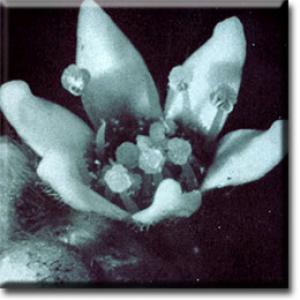
The flowers of Cephalotus are, in fact, somewhat like those of saxifrages. But DNA evidence has now revealed a slightly closer relationship--to Oxalis and its relatives. But it's still clearly in its own family.
setSC-Cephalotus-6

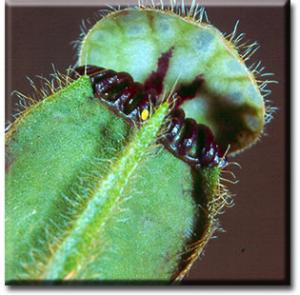
Viewed from the front, pitchers of Cephalotus have three wings, the middle one with a groove in it. The lid of the pitcher and the wings are hairy.
setSC-Cephalotus-7

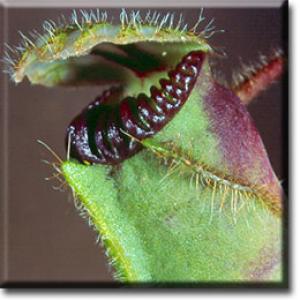
Seen from the side, pitchers of Cephalotus show that the lid is only a small distance above the mouth of the pitcher. The mouth of the pitcher is a dark red. A slender portion of the leaf, at right, connects the pitcher to the stem.
setSC-Cephalotus-9

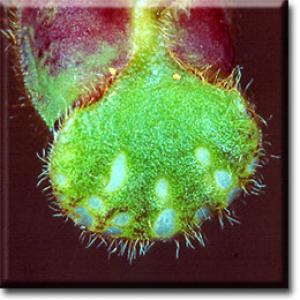
Viewed from the top of the pitcher, the nature of the lid is evident. There are translucent patches in the green tissue. If an insect is inside the pitcher and hasn't yet been caught in the liquid pool, it may fly upward, responding to the light it sees in these "windows" as though it were flying toward the sky....
setSC-Cephalotus-10

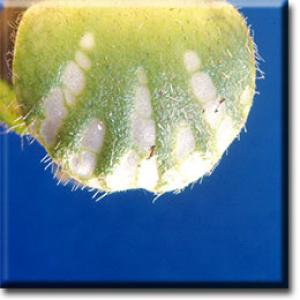
With some light beneath the lid as well as on its surface, the window-like nature of the translucent areas is clearly evident. Interestingly, the same feature can be found in the lids of the unrelated North American pitcher plants Darlingtonia and Sarracenia.
setSC-Cephalotus-11

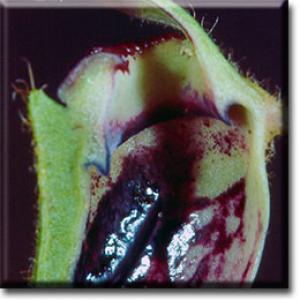
To see why the pitcher of Cephalotus is such a good trap, let's look at a section of the pitcher, starting at the top. At the top, we see a piece of the lid. Then, not far below, the reddish-purple mouth. It not only has slippery surfaces, it has some tiny downwardly-pointing teeth arching over the pitcher, so that an insect tends to return to the pitcher rather than escapee from it. And then, below that, there's one more device to keep an insect inside--a second rim.
Below that, the purple and whitish surfaces of the pitcher are difficult for an insect to climb. It an insect isn't caught immediately by the pool, it will tend to buzz around in the pitcher, fooled by the "windows" in the lid, and will probably fail to climb out and will tire enough so that eventually it will fall into the liquid pool at the bottom of the pitcher.
setSC-Darlingtonia_californica-1

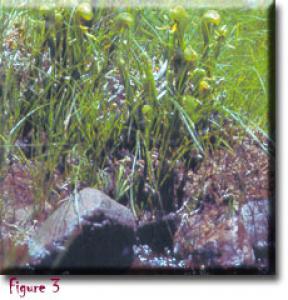
Darlingtonia californica grows along stream sides and in bogs in northern California and adjacent parts of Oregon. Although the distribution of Darlingtonia is somewhat similar to the distribution of serpentine rocks in these areas, they aren't identical at all. Darlingtonia doesn't appear restricted to the serpentine sites, but it does appear to grow well in areas rich in heavy metals.
setSC-Darlingtonia_californica-2

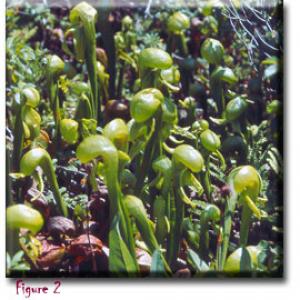
In a few flat boggy areas, one can see thousands of Darlingtonia plants. They prefer sunshine and don't grow well in shade. If you want to visit a large colony of Darlingtonia plants, there is one open to the public near Florence, Oregon, on the coast highway.
setSC-Darlingtonia_californica-3

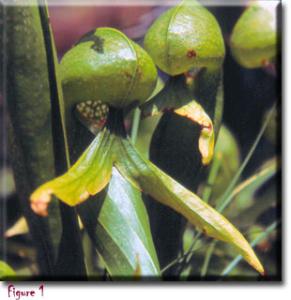
The leaf of Darlingtonia is unique: it is tubular, and contains a fluid that digests trapped insects. The upper part of the leaf, show here, is modified for the trapping function. The end of the leaf is hooded. There is a circular opening through which insects can fly into the hood. So why would they do so? One reason: on the two flag-like structures, there are glands that secrete sugary nectar, such as flies and other insects like to fed on. There are more nectar glands inside the hood, so an insect tends to progress right into the hood.
setSC-Darlingtonia_californica-4

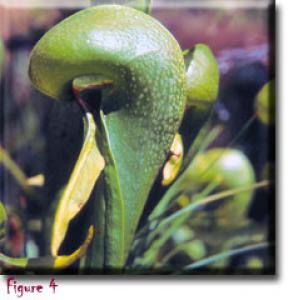
Here we can see the hood of a leaf with its flag-like appendages. Notice the circular opening through which insects enter the hood.
setSC-Darlingtonia_californica-5

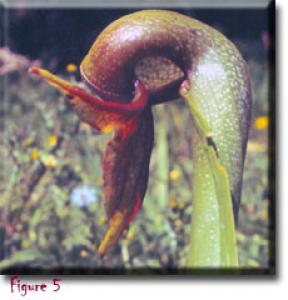
. Leaves of Darlingtonia often turn reddish-purple. This is a color that tends to attract flies and may aid in leading them to the leaves. Notice also that the hood has translucent areas in it, especially near the top of the hood. These have a clever purpose...
setSC-Darlingtonia_californica-6

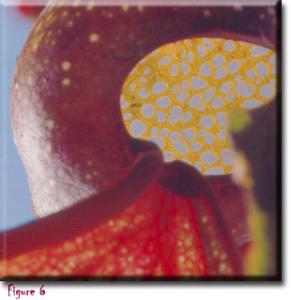
Now we see the hood the way an entering insect sees it, and a second reason for why an insect would enter is evident. The translucent windows in the leaf tissue look sky, so that the insect tends to fly upward thinking it is going outside of the hood...
setSC-Darlingtonia_californica-7

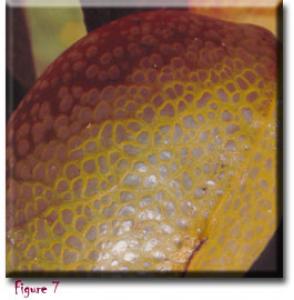
Here we see the windows from the outside of the hood. They are areas that have no chlorophyll or other pigments in the cells, and are remarkably clear.
setSC-Darlingtonia_californica-8

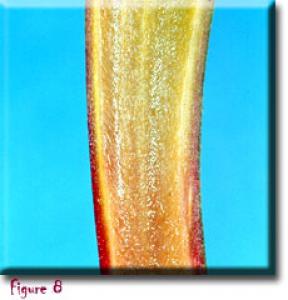
So why doesn't an insect just buzz around in the hood until it finds its way out through the circular opening? It is, of course, fooled by the windows. But the inside of the hood has a waxy surface, so that an insect landing on that surface can't grip it and tends to fall into the tubular part of the leaf. Once in the tubular part of the leaf, shown here in sectional view, it's in trouble. Sharp downwardly-pointing hairs, which here merely look like glistening areas, prevent the insect from climbing back up the tube to the hood.
setSC-Darlingtonia_californica-9

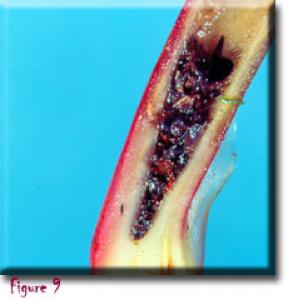
. ...and so the insect falls into a pool of liquid at the bottom of the tube and is drowned. The pool of liquid doesn't show here because in sectioning the leaf, the liquid drained out. But you can see the bodies of dead insects that have been trapped by this particular leaf. The soft parts of the insects are digested and turned into nitrogen compounds that are used by the plant. Darlingtonia, like other carnivorous plants, grow in water that is poor in nitrogen, and the soft parts of insects are rich in nitrogen and can supply the nutritional need to the plant. The hard surfaces of insects cannot be digested and remain in the leaf.
setSC-Darlingtonia_californica-10

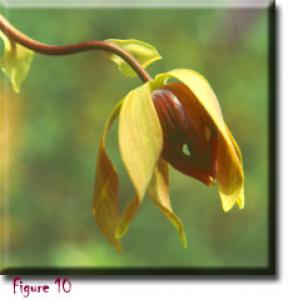
The flowers of Darlingtonia point downwards. This may keep rain out of the flowers; wet flowers usually don't get pollinated. The sepals are large and yellow-green. The petals seem almost hidden--they're dark purple.
setSC-Darlingtonia_californica-11

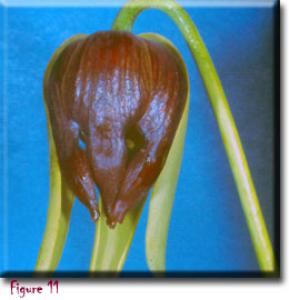
By removing some sepals, we can see the unusual nature of the petals. There are some pale translucent areas on the petals--these transmit some light to the inside of the flower, and perhaps a pollinating insect can find its way into the flower better. Also notice there are some spaces between the petals, elliptical openings through which an insect could enter....but what kind of insect?
setSC-Darlingtonia_californica-12

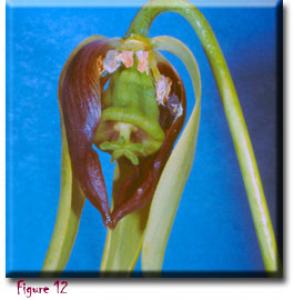
Actually, nobody knows what pollinates Darlingtonia flowers! One worker who watched the flowers didn't see any insects visiting the flowers. In various kinds of flowers, the shapes, colors, and patterns are usually closely related to the pollinators.
setSC-Darlingtonia_californica-13

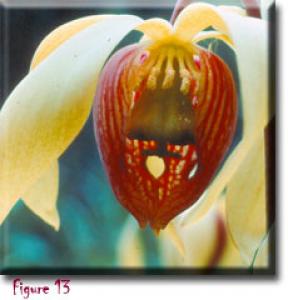
If we remove a sepal and a petal, we can see the inside of the flower as an insect might see it. Notice one of the openings between two petals through which in insect might enter--and the translucent spots in the petals show up well in this daylight photograph. Several things about the Darlingtonia flower suggests that a beetle might visit it--but remember, nobody knows yet.
setSC-Darlingtonia_californica-14


If we look at flowering plants of the world, those pollinated by beetles are frequently dark purple and green. Bees don't pay attention to those colors. Some flowers that are pollinated by beetles have trap-like shapes--and the flowers of Darlingtonia fit that description. The reason why beetle-pollinated flowers have a trap-like shape is that beetles don't fly in and out of flowers very efficiently--beetles tend to stay in flowers and feed on flower parts. By bumbling around inside a flower, beetles can pick up a lot of pollen or deposit it on the pollen-collecting surfaces, the stigmas (the forklike structures in this picture). The longer a beetle stays inside a flower, the more likely it is to pollinate the flower.
setSC-Darlingtonia_californica-15

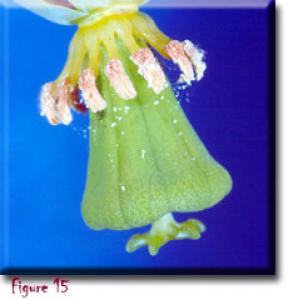
Beetle-pollinated flowers don't have nectar, whereas flowers pollinated by bees, flies, and birds do have nectar. Darlingtonia flowers have no apparent nectar, so that would fit the beetle idea. Beetles like to eat pollen--and as you can see, Darlingtonia flowers produce lots of pollen, which the flower is shedding here from its pale yellow stamens, shown above. If beetles eat the pollen, wouldn't that be bad for pollination? No, it's a compromise. Beetle-pollinated flowers produce plenty of pollen, and beetles aren't very efficient feeders, so there always seems to be plenty of pollen left over for a beetle to carry around on its surfaces, transferring that pollen to another flower.
setSC-Darlingtonia_californica-16

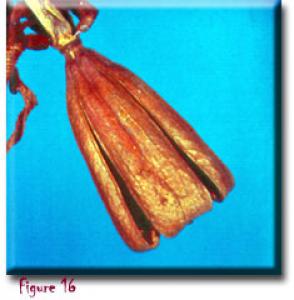
After pollination occurs, the fruit expands and turns brown when it matures. Some splits occur in the sides of the fruits, and some of the seeds might be dispersed through those splits.
setSC-Darlingtonia_californica-17

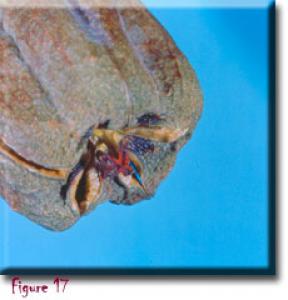
But more likely, the seeds escape through some openings at the end of the fruit. Notice they mouth-like openings at the end of the fruit. These close up if the fruit gets wet during the rain, but they open ujp when the weather is dry and windy. This suggests that the seeds are dispersed by wind. The fruit of Darlingtonia is like a shaker--only a few seeds escape at a time, because the mouth-like openings are small. This benefits the plant, because dispersing seeds over a period of weeks means that the seeds will reach more places. Also, more seeds are dispersed on a windy day, because more seeds sift out through the openings. If seeds of a plant are wind-dispersed, a mechanism like this that disperses more seeds on a windier day is better, because the seeds will be carried farther, and Darlingtonia seeds could reach distant places where it could grow well.
setSC-Darlingtonia_californica-18

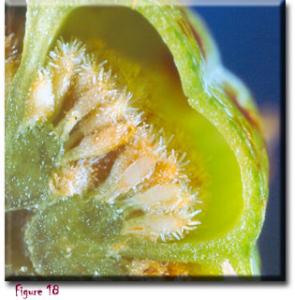
18Here's what the seeds look like just before they mature. This is a cross-section of a fruit. The seeds are still attached to the central part of the fruit. When the seeds mature, they break away from the center of the fruit and gradually fall out through the openings shown in the previous picture. The places where Darlingtonia can grow--streams and bogs--are only small areas. Small seeds carried by wind would reach these small, distant areas better than would bigger seeds.
setSC-Drosophyllum-1

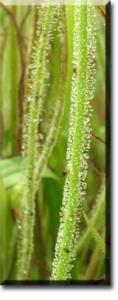
The leaves of Drosophyllum lusitanicum are slender, like pine needles, and bear numerous hairs, each with a sticky droplet at the tip. This gives the plant the common name, "dewy pine." It looks somewhat like a sundew, but belongs in a family by itself. The leaves don't cur up, as do those of sundews, when an insect is caught on the sticky hairs. The leaf does gradually digest insects it catches, however. Drosophyllum is native to Portugal and southern Spain.
setSC-Heliamphora_minor-1

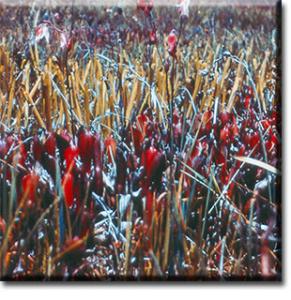
Heliamphora is one of three genera of the family Sarraceniaceae (the others are Darlingtonia and Sarracenia). One interesting fact about Heliamphora is the area where it grows: the flat-topped mountains (called "tepuis") of what is collectively called the Guiana Highlands. These mountains, which average about 2400 m tall, rise rather sharply to flat summit areas that are often cloud covered. Heliamphora can be found in wet, boggy areas of the tepuis. This picture shows Heliamphora minor on Chimanta-Tepui.
setSC-Heliamphora_tatei-2

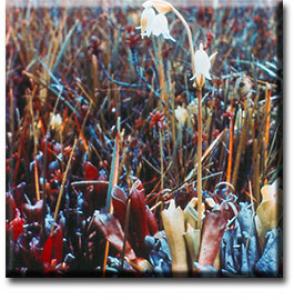
There are six species of Heliamphora on the tepuis. Five of the species, like H. minor (shown), tend to have short stems, but one, H. tatei, tends to climb or lean on other plants and reaches 4 m in height. According to DNA data, Heliamphora is most like the ancestor of the family Sarraceniaceae. The flowers are recurved, as in Darlingtonia and Sarracenia. Recurved flowers have been claimed to be an adaptation for keeping rain from collecting in flowers, and thus pollination could occur even during rainy periods.
setSC-Heliamphora_heterodoxa-3

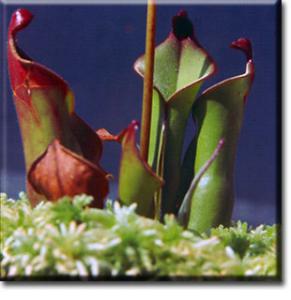
The leaves of Heliamphora are reportedly not very efficient at catching insects, judging from the quantity of insects found at the bottom of the tubular leaves ("pitchers"). The leaves of H. heterodoxa, shown here, show several distinct regions. The small hood-like "spoon" at the tip of a leaf has nectar glands on its lower surface. The reddish color of the spoon may attract insects, and the hood-like shape might prevent nectar from being washed away by rain--these are only guesses. The funnel-like zone of the leaf below the spoon tends to be reddish and therefore an insect might follow that color cue. The lower neck-like part of the funnel has downwardly-pointing hairs that insure that an insect will continue to walk downward, since walking upward against these tiny spikes would be difficult. The lower part of the leaf, a little wider than the base of the funnel, contains water with a digestive enzyme, a pool from which an insect, once caught, rarely escapes. The leaf seems like a well-designed trap. If the number of insects caught is fewer than in leaves of Darlingtonia and Sarracenia, perhaps that reflects a relatively low insect density in the relatively high elevations of the tepuis.
setSC-Heliamphora_heterodoxa-4

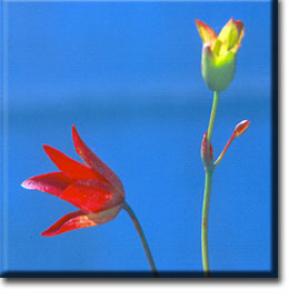
The sepals of Heliamphora heterodoxa are easily seen and vary from green to red in color--the petals are small and can't be seen in this picture. The flowers tend to become upright as the fruits mature.
setSC-Heliamphora-5

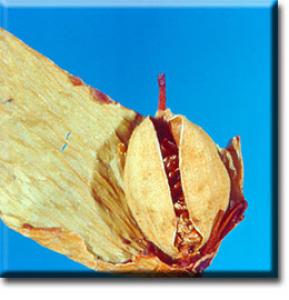
The fruits of Heliamphora are dry when they mature, and split open at the sides to reveal numerous seeds--botanists call such fruits capsules. The seeds probably shake out through the slits in the capsule. A stronger wind would shake out more seeds, which would be advantageous in carrying a higher proportion of the seeds for longer distances.
setSC-Heliamphora-6

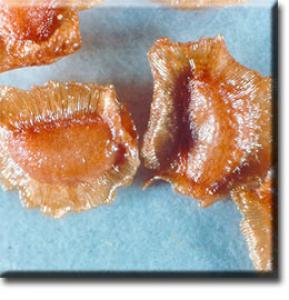
The seeds of Heliamphora, seen much magnified here, have wings on them. This suggests that they are dispersed by wind. The wings probably permit the seeds to be picked up by gusts of wind, once they have fallen to the ground. However, wings of this sort aren't efficient at dispersal for long distances in wind--a few seeds would be carried long distances in major storms, but in most weather conditions, many seeds would fall near the parent plant. This may be a good dispersal strategy, because the tepuis are like relatively small islands, so most of the habitats where Heliamphora could grow are very close to the existing plants. Heliamphora does not grow in the lowland areas surrounding the tepuis--the climate and other conditions are just too different from the temperature and moisture on the top of these tableland mountains.
setSC-Pinguicula_lutea-1


Here we see a butterwort, Pinguicula lutea, in its native habitat near Jacksonville, Florida. Pinguicula lutea occurs in sunny, open, wet areas throughout the southeastern U.S. Although butterworts have leaves and therefore trapping mechanisms that look nothing like those of the bladderworts (Utricularia), the two belong to the same family (Lentibulariaceae). Pinguicula bears one or two flowers at the end of a long stalk.
setSC-Pinguicula_lutea-2

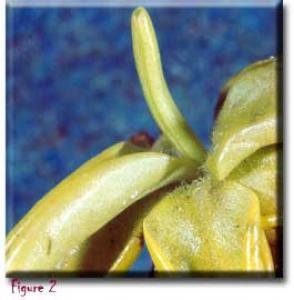
The leaves of Pinguicula lutea seen up close, bear short hairs, (seen at the base of the lower leaf) which secrete sticky mucilage. Invisible in the shiny surface of the picture are tiny round glad hairs that digest insects that are caught in the mucilage.
setSC-Pinguicula_lutea-3

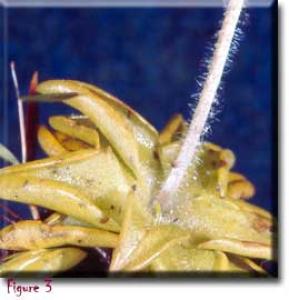
The leaves of Pinguicula are yellowish in color, which is probably the source of the common name butterwort. The trapping mechanism of Pinguicula is a simple one. Insects become stuck in the sticky mucilage (which they may mistake for water or nectar). When an insect becomes stuck on the mucilage, the edge of the leaf slowly rolls over. The leaves never completely close. When the insect is digested, the leaf edges unrill and the leaf becomes more nearly flat.
setSC-Pinguicula_caerulea-5

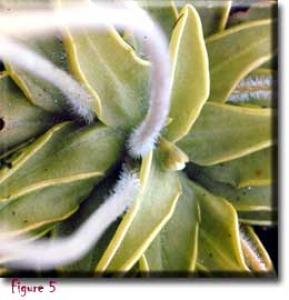
Here are the leaves of Pinguicula caerulea, seen from the above. The bases of three flower stalks can be seen. Pinguicula caerulea occurs in the southeastern United States.
setSC-Pinguicula_lutea-4

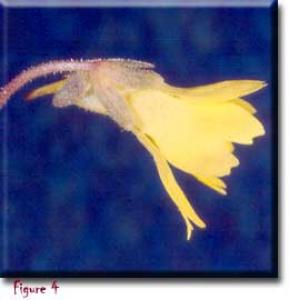
The flowers of Pinguicula lutea are bright yellow. This color is attractive to bees. A bee could fit easily into the wider part of the flower of Pinguicula lutea. There is a small pointed tip on the flower, the spur (at left), which contains a droplet of nectar. A bee, properly oriented within the flower, could feed on the nectar if it has a long tongue.
setSC-Pinguicula_caerulea-6

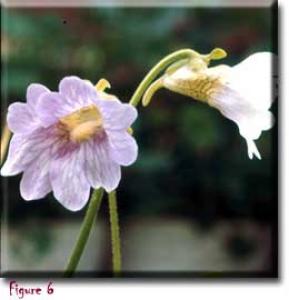
The flowers of Pinguicula caerulea are bluish-purple (the word caerulea means "sky-blue" in Latin). Here one flower is seen from the front, one from the side. Notice the small spur on the flower seen in side view. As with Pinguicula lutea, the flowers of Pinguicula caerulea are wide enough to admit a bee, and a long-tongued bee can, when it fully enters the flower, suck nectar from the spur.
setSC-Pinguicula_caerulea-7

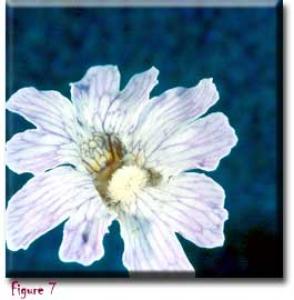
The flower of Pinguicula caerulea, seen from the front, features deep blue-purple veins on a white background. Patterns like this tend to be asociated with be pollination. Where they are, such patterns are called guidelines, because bees are programmed to follow the direction of the veins, which lead them into a flower.
setSC-Pinguicula_caerulea-8

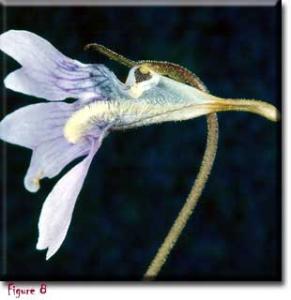
A section through a flower of Pinguicula caerulea shows the passage from outside to inside. The furry lump on the lower side of the throat evidently is a signal to a bee that it is on its way toward nectar, and tells it which is the lower side of the flower. If a crawled into the flower with the fury lump below, its back would be contacted by the anthers, which dust pollen on its back (an indentation on the upper part of the tube of the flower, on its upper side) or by the flower's stigma, which picks up pollen. Then a long-tongued bee could get nectar from the spur, which is too narrow for a bee's head but not its tongue.
setSC-Pinguicula_macroceras-11

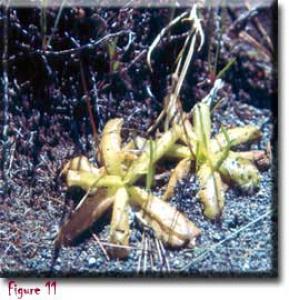
Pinguicula macroceras from northern California isn't a conspicuous plant. A butterwort when not in flower can be identified by its sticky yellowish leaves and by its habitat--acid areas that are wet throughout the year. Butterwort plants are perennials, living for several years.
08-73-JM

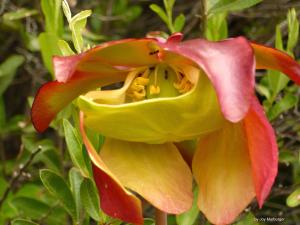
Here is a photo of the northern pitcher plant, Sarracenia purpurea, taken in Pinhook Bog, Indiana Dunes National Lakeshore on June 3, 2009. It shows ants collecting nectar in the flower. Pollinators of the northern pitcher plant include two bee species, Bombus affinis and Augochlorella aurata, and one fly species, Flecherimyia fletcheri (Ne
08-74-JM

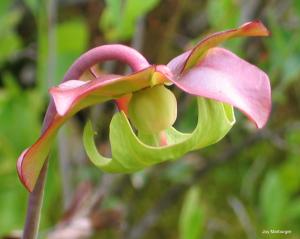
Side view of pitcher plant flower (Sarracenia purpurea), Indiana Dunes National Lakeshore. Note the very small stigma on the upwardly curved style; the ovary is visibly seen.
08-75-JM

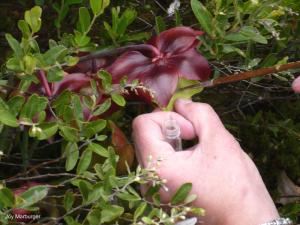
Hand pollination of the norther pitcher plant, Sarracenia purpurea.

